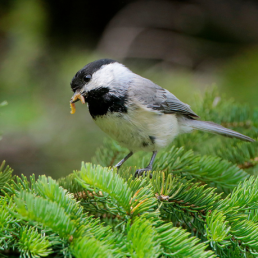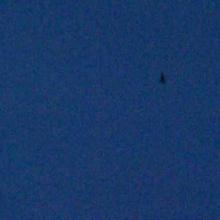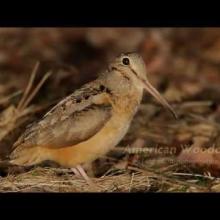

Join BirdNote tomorrow, November 30th!
Illustrator David Sibley and actor H. Jon Benjamin will face off in the bird illustration battle of the century during BirdNote's Year-end Celebration and Auction!
When it comes to silly walks, no bird outdoes the American Woodcock’s one-of-a-kind strut. It goes like this: take one step forward, then rock your whole torso forward and back a few times before sliding another foot forward — all while keeping your head perfectly steady. It looks like a bird with an undeniable sense of rhythm. It’s not entirely clear why woodcocks walk this way. It’s another of the bird world’s little mysteries — and one of its grooviest dance moves.
BirdNote®
The Woodcock’s Silly Walk
Written by Conor Gearin
This is BirdNote.
Monty Python character: “I have a silly walk, and I’d like to obtain a government grant to help me develop it.”
Second character: “I see. May I see your silly walk?”
First character: “Yes, certainly, yes!”
When it comes to silly walks, no bird outdoes the American Woodcock’s one-of-a-kind strut. It goes like this.
[Music: “Chameleon” by Herbie Hancock]
Take one step forward, then rock your whole torso forward and back a few times before sliiiiiding another foot forward — meanwhile, keep your head perfectly steady. It looks like a bird with an undeniable sense of rhythm.
[American Woodcock call]
Why do woodcocks do this quirky walk? Some think they’re shifting their weight onto their front foot, causing worms to wriggle underground and making them easier to catch. But woodcocks sometimes dance on frozen soil, where earthworms are deep in their winter burrows.
Another explanation suggests the rocking is a signal to potential predators. If a woodcock sees a bigger animal but doesn’t want to leave a good spot for food, teetering back and forth could tell the predator that the woodcock is aware of the danger and can fly away in an instant, so chasing isn’t worth the effort.
[American Woodcock calls and wing noise]
The woodcock’s walk is another of the bird world’s little mysteries — and one of its grooviest dance moves.
[Music: “Chameleon” by Herbie Hancock]
For BirdNote, I’m Michael Stein.
###
Senior Producer: John Kessler
Content Director: Allison Wilson
Producer: Mark Bramhill
Managing Producer: Conor Gearin
Bird sounds provided by The Macaulay Library of Natural Sounds at the Cornell Lab of Ornithology, Ithaca, New York. American Woodcock ML 111087881 recorded by Dave Slager.
Xeno Canto XC 363105 recorded by Andrew Spencer.
Music: “Chameleon” by Herbie Hancock
BirdNote’s theme was composed and played by Nancy Rumbel and John Kessler.
© 2022 BirdNote November 2022
Narrator: Michael Stein
ID# AMWO-04-2022-11-30 AMWO-04
Reference:
https://www.allaboutbirds.org/guide/American_Woodcock/overview
https://sora.unm.edu/sites/default/files/journals/auk/v099n04/p0791-p07…






